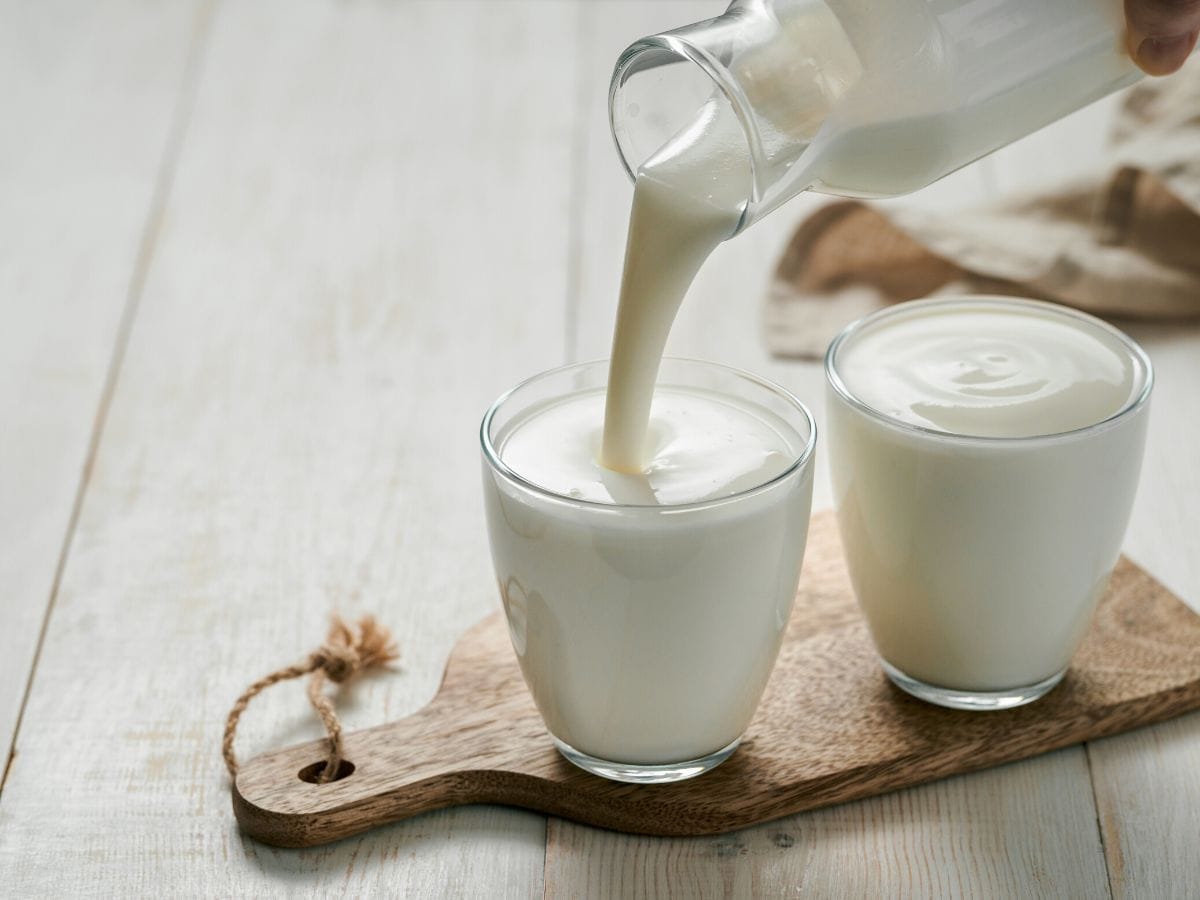
When I first started exploring the world of probiotics and gut health, I was a bit skeptical of kefir. The idea of drinking a fermented dairy product wasn't exactly appealing to me. But after giving kefir a chance, I was pleasantly surprised. Not only did I like the taste, but knowing that I was getting a healthy dose of probiotics with each sip made me feel good about my choice. So, what does kefir taste like? Read on to learn everything you need to know about kefir's flavor and creative ways to enjoy it.
Jump to:
What is kefir?
Kefir is a fermented milk drink that originated in the Caucasus Mountains of Eastern Europe. It is made by adding kefir grains (which are a combination of bacteria and yeast) to milk (cow, goat, or sheep) and allowing the mixture to ferment for 24-48 hours.
The result? A tangy, slightly effervescent drink that is an awesome source of probiotics, protein, and other essential nutrients that are very beneficial for digestion and gut health.
What does kefir taste like?
Like any food or drink, your opinion on kefir will ultimately depend on your taste buds. But, to help you decide whether you want to give it a try, I’m sharing a few details on its flavor profile below. Here's what you can expect:
- Kefir has a distinct tangy flavor that is often described as similar to plain yogurt, but with a more sour, acidic taste.
- While you can find sweetened, fruit-flavored versions at the grocery store, plain kefir is not sweet. And, that's the healthier option.
- The consistency of kefir is thinner than yogurt, and is best described as a thick liquid.
- Some, but not all kefir, will have a slight effervescence that can give it a carbonated sensation in the mouth. These CO2 bubbles are a byproduct of fermentation.
- The exact taste of kefir depends on the time, temperature and environment it is fermented in. So it can differ by batch or brand.
Does kefir taste like yogurt?
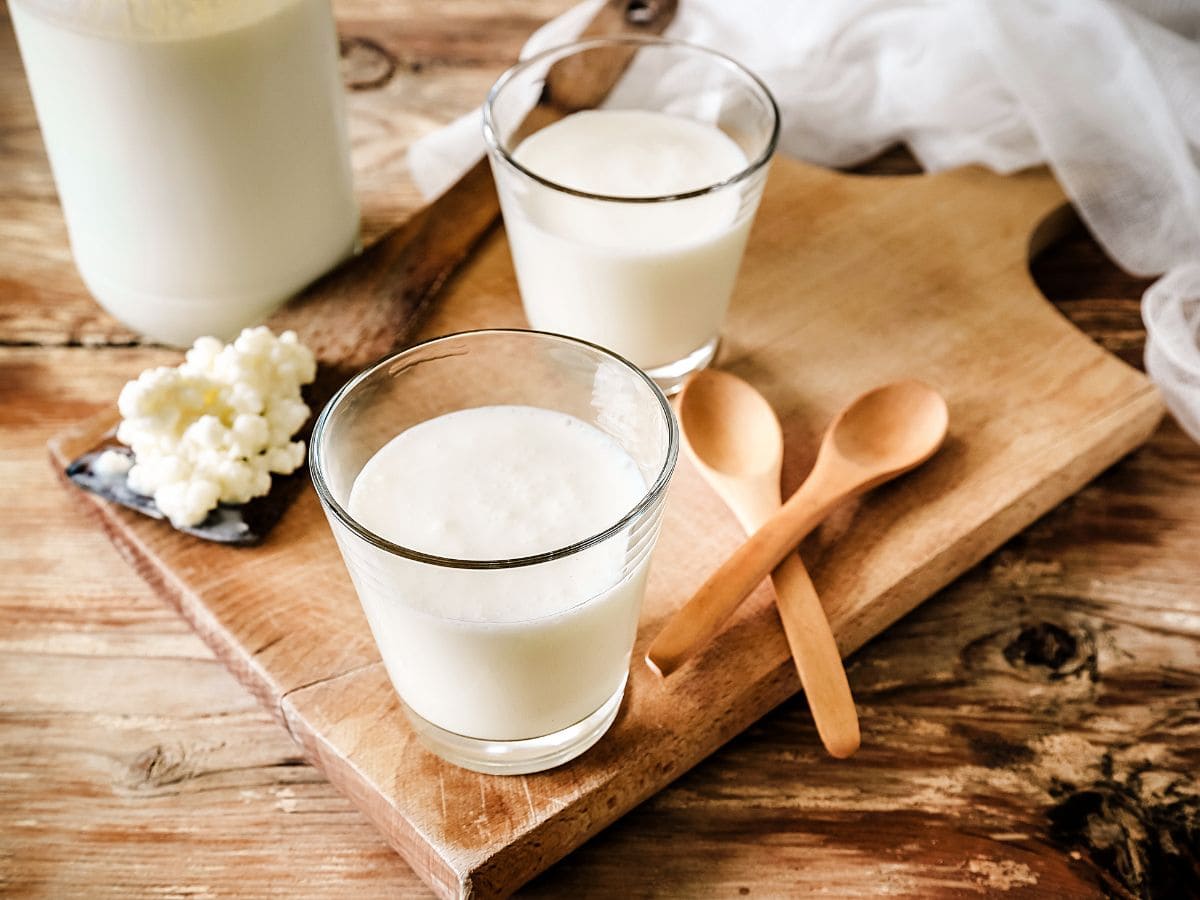
Kefir and yogurt are both fermented dairy products, so they share some similarities in taste and texture. Both have lactic acid, which produces that recognizable tart flavor. However, kefir has a tangier, slightly more sour taste than yogurt, and a thinner, more liquid consistency.
As someone who shares healthy recipes and nutrition tips, I'm frequently asked about my preference between kefir and yogurt. While I appreciate both, I don't have a clear favorite.
I mean, I can't lie, I enjoy starting my day with a delicious yogurt bowl (you can find my tips for building the ultimate yogurt bowl in this post). On the other hand, when I need a quick and easy snack, I like to reach for a glass of kefir, which provides a quick and convenient source of probiotics.
It's important to remember that there's no "perfect" food that can solve all our health needs. Instead, a balanced and varied diet is the key to maintaining good health. I encourage you to incorporate both yogurt and kefir into your diet!
How to buy kefir
Kefir can be found in most health food stores, as well as some grocery stores and online retailers. When buying kefir:
- Look for products that are made with high-quality, organic milk and contain live, active cultures.
- Avoid products that contain added sugars or artificial flavors and colors.
Kefir can also be made at home using kefir grains that can be purchased online or snagged from a friend who already makes kefir. If you're interested in that, here's a post I find helpful from The Kitchn.
My favorite kefir brands
There are so many kefir brands available on the market. And, even with the tips above, it can be hard to decide which one to buy. That's why I'm sharing some of the brands I've used and loved below.
my go-to kefir

Maple Hill Creamery 100% Grass Fed Organic Kefir
Buy Now →
Lifeway Unsweetened Low Fat Kefir
Buy Now →How to make kefir taste better
If you are not a fan of the tangy taste of kefir, there are several ways to make it more palatable.
- Add natural sweeteners like honey or maple syrup
- Mix it with fruit to create a sweeter flavor profile.
- Another option is to use kefir in your recipes, like smoothies, salad dressings and dips. Keep reading for more ideas on that.
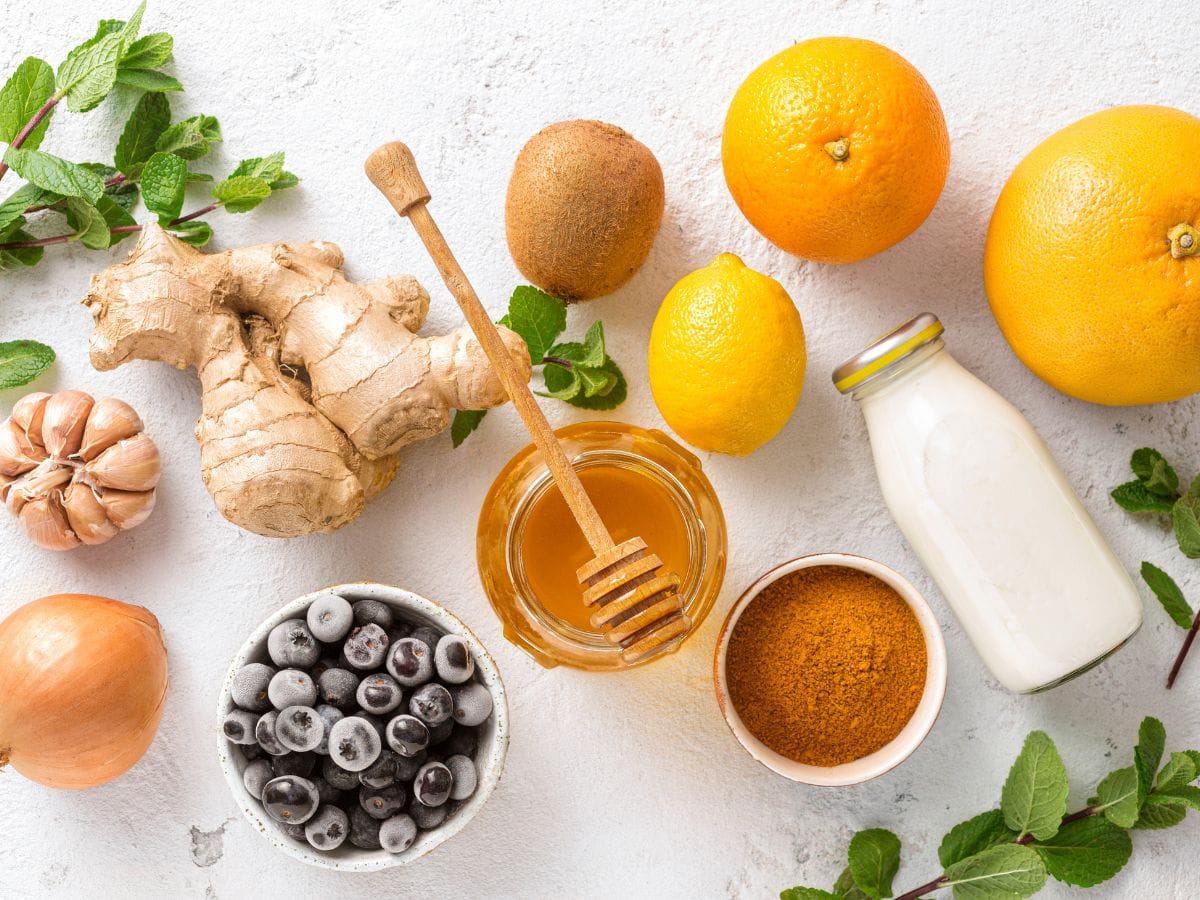
How can you use kefir in cooking and baking?
As someone who loves to experiment with healthy recipes in the kitchen, kefir has become a staple ingredient in many of my creations. I love the versatility of this superfood, as it can be used in everything from savory dips to sweet baked goods.
Here are some fun ways to use kefir:
- Use kefir in place of milk or yogurt in smoothies for a tangy twist
- Add kefir to pancake or waffle batter for a light, fluffy texture
- Use kefir as a marinade for chicken or fish to add flavor and tenderness
- Make a creamy salad dressing with kefir, olive oil, and herbs
- Add kefir to muffin or cake batter for a moist, flavorful result
One of my go-to ways to use kefir is in a creamy salad dressing. I simply whisk together some kefir, lemon juice, dijon mustard, and herbs for a delicious and healthy alternative to store-bought dressings. It's easy, customizable, and always a hit with my family and friends.
And, my other favourite - smoothies. Here are you some recipes you can try kefir in:
What are the potential health benefits of kefir?
Kefir is a nutrient-dense food that offers several potential health benefits. Here are some of the most significant:
- Improved Digestive Health: Kefir is a probiotic food that contains a wide range of beneficial bacteria and yeast strains that can help improve the health of your gut microbiome. These microorganisms can help break down food, absorb nutrients, and promote a healthy balance of gut flora.
- Boosted Immune Function: The probiotics in kefir can also help strengthen your immune system by fighting off harmful pathogens and promoting the growth of beneficial bacteria. This can help reduce the risk of infections, allergies, and autoimmune disorders.
- Increased Nutrient Absorption: Kefir is a rich source of vitamins and minerals, including calcium, magnesium, and vitamin D. The probiotics in kefir can help improve the absorption and utilization of these nutrients, which can help support overall health and wellness.
- Improved Mood and Cognitive Function: The probiotics in kefir may also have a positive impact on your mood and cognitive function by influencing the production of neurotransmitters and other brain chemicals. Some studies have even suggested that kefir may be beneficial for people with anxiety, depression, and other mood disorders.
- Anti-Inflammatory Properties: Some studies have suggested that the probiotics in kefir may have anti-inflammatory properties that can help reduce the risk of chronic diseases like heart disease, diabetes, and cancer.
Is kefir healthier than yogurt?
As a holistic nutritionist, I often get asked about the health benefits of yogurt verse kefir. Both are fermented dairy products that are loaded with beneficial bacteria, but they each have their own unique advantages.
Let's start with yogurt. Yogurt is a great source of calcium and protein, and it can also help improve digestion and boost immunity. The probiotics found in yogurt can help balance the gut microbiome, leading to improved nutrient absorption and better overall health.
But what about kefir? Well, kefir is a bit different from yogurt in that it contains a wider variety of probiotic strains, including several strains of bacteria and yeast that are not typically found in yogurt. This can make it an even more effective tool for improving gut health and boosting immunity. Kefir has been shown to have antimicrobial, anti-inflammatory, and antioxidant properties, making it a great choice for anyone looking to improve their overall well-being.
So, which one should you choose? The truth is, both yogurt and kefir can be excellent additions to a healthy diet. If you're looking for a simple way to boost your calcium and protein intake, yogurt is a great choice. But if you're looking to really narrow in on your gut health and overall immunity, you're going to want to incorporate kefir in your diet.
Similar articles
Fast facts
What does kefir taste like?
- Ultimately, it's up to your taste buds.
- Kefir is a delicious and nutrient-dense drink that offers several potential health benefits.
- It has a tangy, slightly sour taste that is similar to yogurt
- While some people may find the taste of kefir to be an acquired taste, there are several ways to make it taste better, including adding fruit or natural sweeteners.
- Kefir can also be used in cooking and baking to add a tangy, probiotic boost to your favorite recipes.
Now that you know all about kefir, what other foods do you want to learn about? Let me know in the comments below and I'll be sure to answer them as best I can.


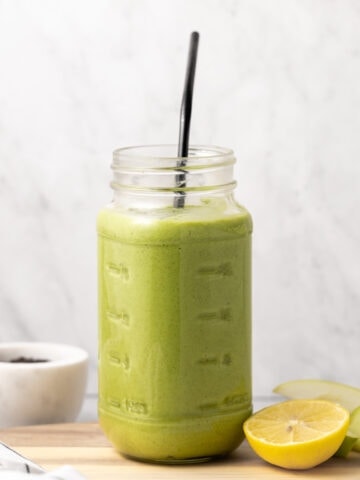
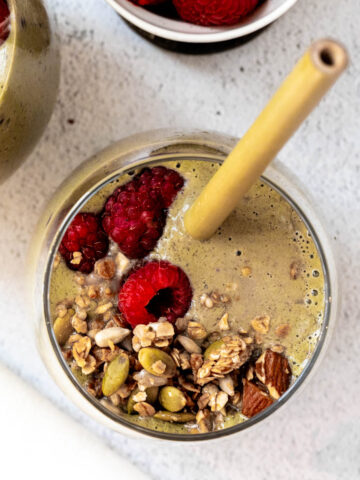
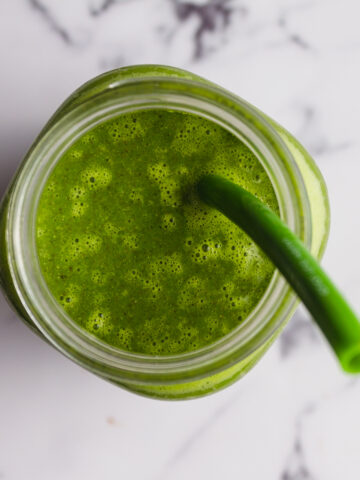
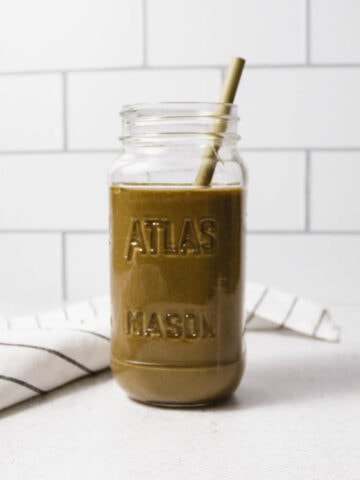
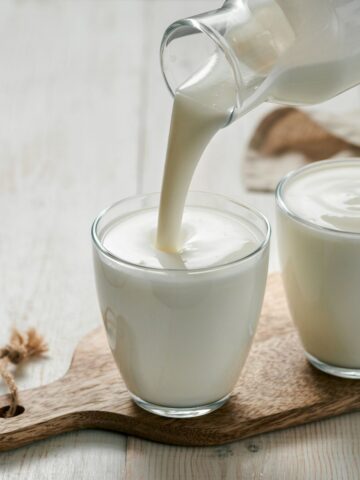
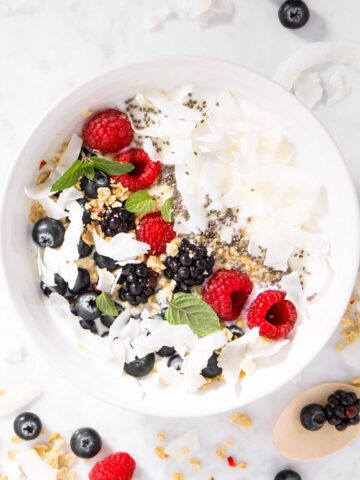
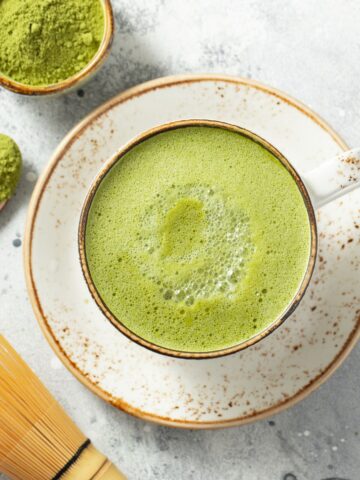

Leave a comment!